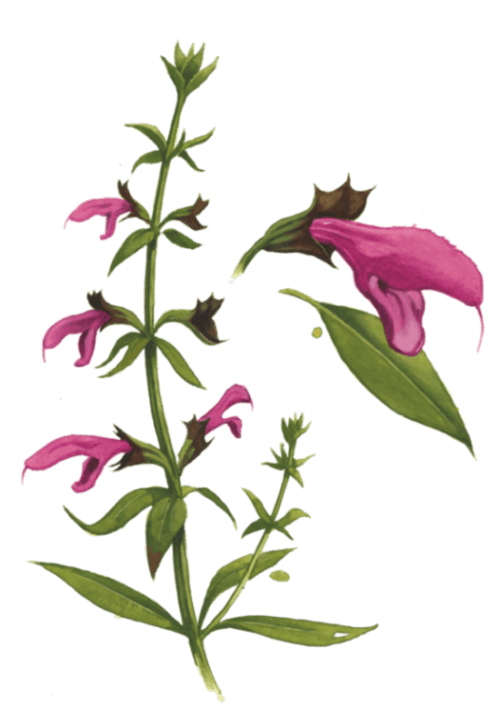
A hiker in the Frio Canyon could easily pass near a horticultural rarity without noticing it at all.
Nestled into limestone cliff sides along the north fork of the Frio River are two clusters of Salvia pentstemonoides, one of only eight known wild populations of the plant worldwide.

Commonly known as Big Red Sage, this shrub-like plant can blend easily with other native flora until the summer months when it produces sweet, vibrant red flowers that attract hummingbirds and bees. The salvia thrives in well-drained rock and clay, making the limestone cliffs of the Edwards Plateau region the perfect host for endemic populations.
Big Red Sage was first documented in the Texas Hill Country in the 1840s and was thought to have gone extinct a century later. In the mid-1980s, however, populations of the rare Salvia were found in a canyon in Bandera County and at Frederick Creek in Boerne. Dan Hosage collected seeds in Boerne and first sold them at his nursery near San Marcos. Today, propagated Big Red Sage can be purchased from several Hill Country nurseries, lending their lemon-lime scent to gardens around Central Texas.
Wild sightings of the salvia continue to be rare, though, which made the discovery of the Frio River Canyon population that much more exciting.
The two clusters—as many as 60 plants in total—sprout from high cliff sides, limestone shelves, and even a river bank of shale-like limestone fragments. Nancye Drukker, a Texas Master Naturalist, made the first known discovery of Big Red Sage in the Canyon in July of 2015 while at a retreat at Laity Lodge.
Uncertain what she was seeing, Drukker sent a few photos to Texas Parks and Wildlife (TPWD) botanist and plant ecologist Jason Singhurst, who “completely freaked out.”
Drukker returned to the Canyon just a few days later with Singhurst in tow to formally document the population. The next summer in 2016, Drukker worked with TPWD on official maps of the area, and that September Drukker found a second cluster in the Canyon’s population.

Field botanists collected samples for the TPWD genetic diversity project, which was funded by Morton Arboretum and the Texas conservation license plate program—the license plates with horned lizards and other animals on them.
The population growing near the headwaters of the Frio River expressed a genetic diversity unlike the other studied populations and especially rare when compared to cultivated plants found in nurseries.
Because it is relatively simple to cultivate Big Red Sage from a seed, the species is not likely to go extinct. Wild specimens, however, face threats that are difficult to predict or control. Flooding and erosion have wiped out entire populations, while invasive plant species have forced clusters to compete for space and nutrients in already rare environments. Invasive wildlife can also become a threat.
“The population growing near the headwaters of the Frio River expressed a genetic diversity unlike the other studied populations and especially rare…”
In the Canyon, conservation and stewardship are crucial to protecting rare species like the Big Red Sage.
“We take more of a hands-off approach to dealing with the sage itself,” said H. E. Butt Foundation Assistant Director of Stewardship Kevin Wessels. “It’s more about holistic stewardship of the property. We manage for the whole.”
That means managing the size of the ungulate population in the Canyon, controlling destructive wildlife like feral hogs and aoudad, removing invasive plant species, and preserving and conserving the water flowing from the springs that feed the Frio River at its headwaters.
“We are called to steward what is entrusted to us,” Wessels said. “The foundation has placed an emphasis on being able to continue doing what we do for the next 100 years. My job is to cultivate a healthy, robust, diverse environment in the Canyon for future generations. We want the Canyon and the things in it to be healthier in 10, 50, 100 years than it is today.”
To learn more about Nancye Drukker’s work in the Canyon, take a look at “Caring for this Place”, in Echoes Volume 2, Number 2.
